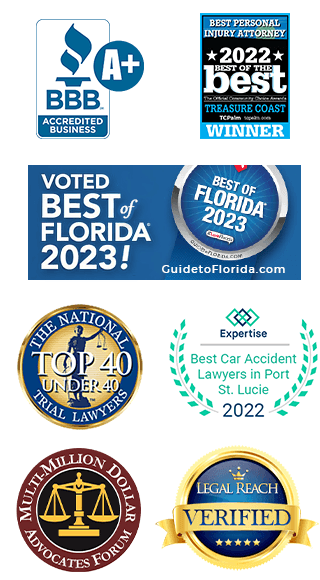Our Florida car accident attorneys frequently offer news stories that will educate the public about the importance of wearing safety belts when traveling our roadways. Unfortunately, far too many people continue to fail to buckle up when in a vehicle. Just this week, an SUV carrying six people crashed on Florida’s Turnpike killing one person and injuring the five other occupants. According to police, four passengers, who were not wearing their seatbelts, were ejected from the vehicle as it rolled.
While we realize that seatbelts cannot save everyone’s life in an accident, we do know that statistics show that one’s chances of surviving are greatly increased when properly belted. The National Highway Traffic Safety Administration (NHTSA) reports nearly 12,500 lives are saved each year due to safety belt usage. It further estimates that in 2010, 769 lives were saved in Florida due to vehicle occupants wearing their safety belts, but another 229 lives could have been saved if the people had been buckled up.
The National Safety Council (NSC) runs a campaign urging Americans to buckle up. Its message is simple: “Buckle Up: It’s the single best way to prevent injury.” In addition, the NSC offers a “5 Minute Safety Talk” brochure that debunks seven myths about seat belt usage.
Following are some key myth-busters from the NSC about seat belts:
Myth: It is better for an individual to be ejected from the vehicle.
Fact: An individual is roughly 25 times more likely to be seriously injured if he or she ejected from the vehicle compared to being inside and buckled up. Ejection may not only result in landing on unforgiving pavement, but also scraping along the ground, hitting other deadly roadside objects, or being crushed or flattened by one’s another vehicle.
Myth: Occupants may be able to adequately brace themselves in a collision or crash.
Fact: Even in a low-speed crash, the forces involved may make it impossible to avoid contact with other passengers and the vehicle interior—ultimately resulting in injury. At a moderate speed of 30 mph, a collision would throw occupants forward with a force equivalent to 30 times their body weight. Also, occupants being thrown against each other cause one out of four serious in-vehicle injuries.
Myth: Safety belts will trap occupants in their vehicles, particularly in the event of submersion or fire.
Fact: Under 0.5 percent of all crashes or collisions that result in injury involve submersion or fire—but wearing a safety belt can save a life, even if fire or submersion does occur. An unrestrained occupant may be slammed into the windshield or dashboard, may be knocked unconscious, and may be unable to extract or disentangle himself or herself. An unrestrained occupant rendered unconscious could also possibly block the exit paths of other individuals.
Our South Florida car accident lawyers urge everyone to buckle up each and every time you get in a vehicle. No trip is too short to risk a serious injury, or death, when riding without a safety restraint. While you may not be able to prevent an accident from happening, you may be able to prevent yourself from being injured.
Contact a Florida Car Accident Lawyer
If you or a loved one has been injured in a Florida car accident due to the negligence or carelessness of another driver, seek experienced counsel. I am attorney Philip DeBerard. I have three decades of legal experience representing people injured in car accidents and other personal injury claims.
The law firm of Philip DeBerard, Injury Attorney, represents victims of car accidents and automobile crashes in Port St. Lucie, Fort Pierce, Jupiter, Stuart, Okeechobee, Vero Beach and Palm Beach. If character traits such as integrity, dedication and compassion are what you seek in an accident lawyer, call Philip DeBerard. Choosing the right accident lawyer does make a difference.
Call 1-800-299-8878 to speak with a knowledgeable Florida car accident attorney or fill out our online contact form.




